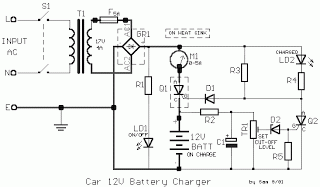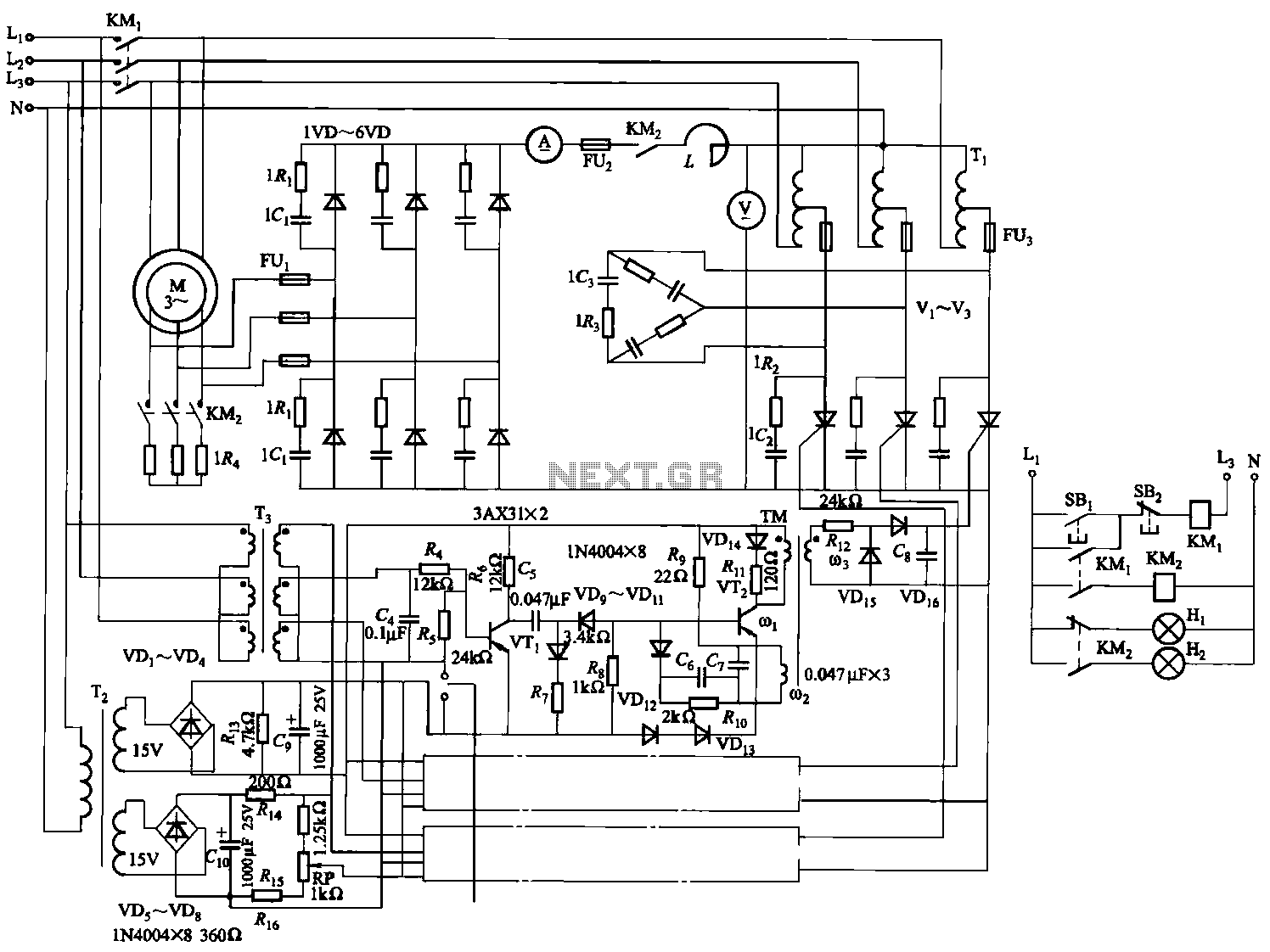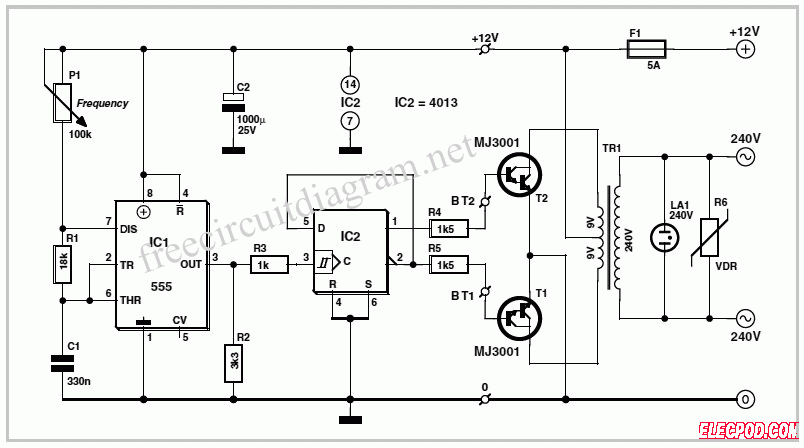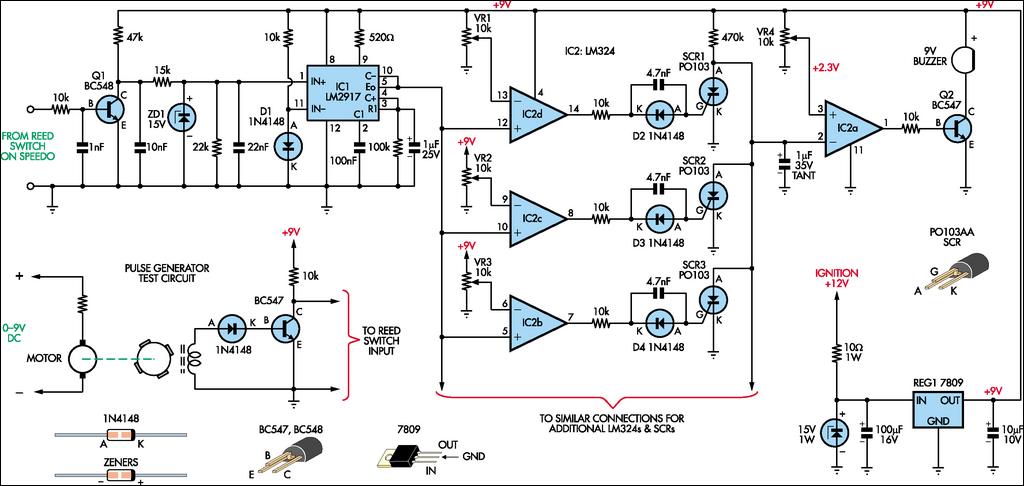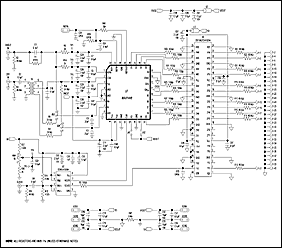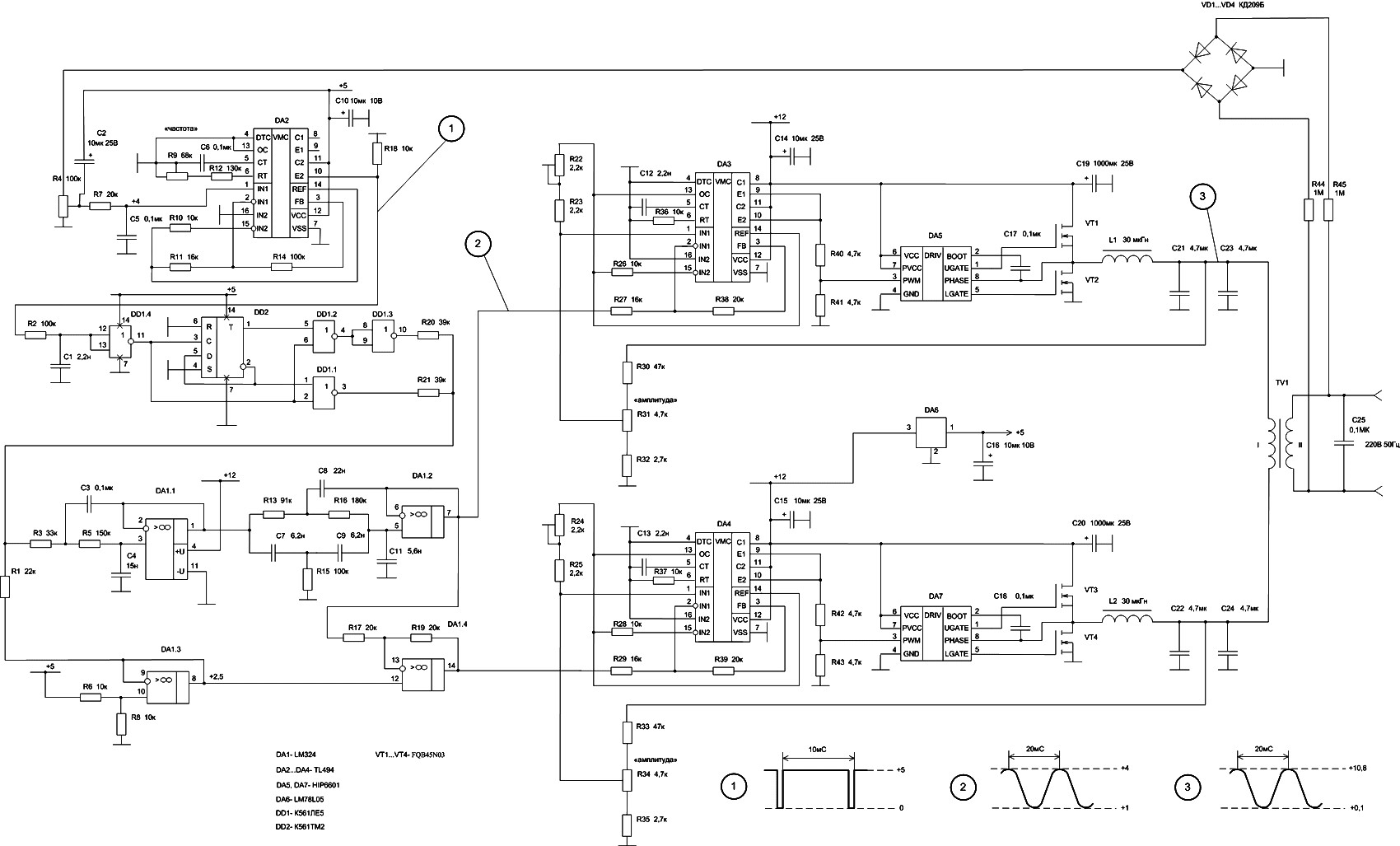
12V Speed Controller/Dimmer
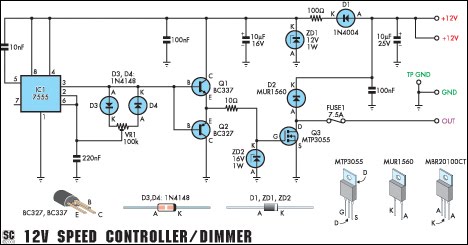
This circuit serves as a speed controller for a 12V motor with a continuous rating of up to 5A or as a dimmer for a 12V halogen or standard incandescent lamp rated up to 50W. It regulates power to the load (motor or lamp) using pulse width modulation (PWM) at a frequency of approximately 220Hz. SILICON CHIP has previously produced various DC speed controllers, including a high-power 24V 40A design featured in the March & April 2008 issues and a popular 12V/24V 20A design from June 1997. While many of these designs may be overly complex for certain applications, this basic circuit is presented as a simpler alternative, utilizing a 7555 timer IC and a MOSFET with minimal additional components. Due to its simplicity, this design does not monitor motor back-EMF for enhanced speed regulation and lacks sophisticated overload protection beyond a fuse. However, it remains an efficient and cost-effective solution. Potential applications include controlling 12V motors, fans, or lamps in cars, boats, recreational vehicles, model boats, and model railways. This circuit can effectively manage a 12V fan in various settings. The 7555 timer (IC1) generates variable-width pulses at approximately 210Hz, which drive MOSFET Q3 (via transistors Q1 and Q2) to modulate the speed of a motor or dim an incandescent lamp. It is important to note that while the circuit can dim 12V halogen lamps, this method is inefficient. For dimmable 12V lighting, using 12V LED lamps is recommended, as they are available in standard bayonet, miniature Edison screw (MES), and MR16 halogen bases. LED lamps are more efficient than halogen counterparts, generate less heat, and have a significantly longer lifespan.
The circuit operates on the principle of pulse width modulation (PWM), which allows for efficient control of power delivery to the load. The 7555 timer IC functions as an astable multivibrator, producing a continuous square wave output. The duty cycle of this square wave can be adjusted, which in turn varies the average voltage supplied to the motor or lamp. The frequency of approximately 210Hz ensures that the load receives sufficient power without causing flickering in lamps or stalling in motors.
The MOSFET Q3 acts as a switch that is controlled by the output of the 7555 timer. When the timer output is high, the MOSFET conducts, allowing current to flow through the load. When the output is low, the MOSFET turns off, cutting off the current. The transistors Q1 and Q2 serve as signal amplifiers, allowing the low output from the timer to control the higher power MOSFET.
The circuit is designed to be straightforward, making it suitable for various hobbyist applications. However, users should consider the lack of advanced features such as feedback mechanisms for speed regulation or overload protection, which may be necessary for more demanding applications. The inclusion of a fuse provides basic protection against overcurrent situations, ensuring the circuit components are safeguarded during operation.
Overall, this circuit represents a practical solution for controlling 12V devices in various settings, offering an accessible and efficient method for users requiring basic motor speed control or lamp dimming capabilities.This handy circuit can be used as a speed controller for a 12V motor rated up to 5A (continuous) or as a dimmer for a 12V halogen or standard incandescent lamp rated up to 50W. It varies the power to the load (motor or lamp) using pulse width modulation (PWM) at a pulse frequency of around 220Hz.
SILICON CHIP has produced a number of DC speed cont rollers over the years, the most recent being our high-power 24V 40A design featured in the March & April 2008 issues. Another very popular design is our 12V/24V 20A design featured in the June 1997 issue and we have also featured a number of reversible 12V designs.
For many applications though, most of these designs are over-kill and a much simpler circuit will suffice. Which is why we are presenting this basic design which uses a 7555 timer IC, a Mosfet and not much else.
Being a simple design, it does not monitor motor back-EMF to provide improved speed regulation and nor does it have any fancy overload protection apart from a fuse. However, it is a very efficient circuit and the kit cost is quite low. There are many applications for this circuit which will all be based on 12V motors, fans or lamps. You can use it in cars, boats, and recreational vehicles, in model boats and model railways and so on.
Want to control a 12V fan in a car, caravan or computer This circuit will do it for you. The circuit uses a 7555 timer (IC1) to generate variable width pulses at about 210Hz. This drives Mosfet Q3 (via transistors Q1 & Q2) to control the speed of a motor or to dim an incandescent lamp. While the circuit can dim 12V halogen lamps, we should point out that dimming halogen lamps is very wasteful.
In situations where you need dimmable 12V lamps, you will be much better off substituting 12V LED lamps which are now readily available in standard bayonet, miniature Edison screw (MES) and MR16 halogen bases. Not only are these LED replacement lamps much more efficient than halogen lamps, they do not get anywhere near as hot and will also last a great deal longer.
🔗 External reference
The circuit operates on the principle of pulse width modulation (PWM), which allows for efficient control of power delivery to the load. The 7555 timer IC functions as an astable multivibrator, producing a continuous square wave output. The duty cycle of this square wave can be adjusted, which in turn varies the average voltage supplied to the motor or lamp. The frequency of approximately 210Hz ensures that the load receives sufficient power without causing flickering in lamps or stalling in motors.
The MOSFET Q3 acts as a switch that is controlled by the output of the 7555 timer. When the timer output is high, the MOSFET conducts, allowing current to flow through the load. When the output is low, the MOSFET turns off, cutting off the current. The transistors Q1 and Q2 serve as signal amplifiers, allowing the low output from the timer to control the higher power MOSFET.
The circuit is designed to be straightforward, making it suitable for various hobbyist applications. However, users should consider the lack of advanced features such as feedback mechanisms for speed regulation or overload protection, which may be necessary for more demanding applications. The inclusion of a fuse provides basic protection against overcurrent situations, ensuring the circuit components are safeguarded during operation.
Overall, this circuit represents a practical solution for controlling 12V devices in various settings, offering an accessible and efficient method for users requiring basic motor speed control or lamp dimming capabilities.This handy circuit can be used as a speed controller for a 12V motor rated up to 5A (continuous) or as a dimmer for a 12V halogen or standard incandescent lamp rated up to 50W. It varies the power to the load (motor or lamp) using pulse width modulation (PWM) at a pulse frequency of around 220Hz.
SILICON CHIP has produced a number of DC speed cont rollers over the years, the most recent being our high-power 24V 40A design featured in the March & April 2008 issues. Another very popular design is our 12V/24V 20A design featured in the June 1997 issue and we have also featured a number of reversible 12V designs.
For many applications though, most of these designs are over-kill and a much simpler circuit will suffice. Which is why we are presenting this basic design which uses a 7555 timer IC, a Mosfet and not much else.
Being a simple design, it does not monitor motor back-EMF to provide improved speed regulation and nor does it have any fancy overload protection apart from a fuse. However, it is a very efficient circuit and the kit cost is quite low. There are many applications for this circuit which will all be based on 12V motors, fans or lamps. You can use it in cars, boats, and recreational vehicles, in model boats and model railways and so on.
Want to control a 12V fan in a car, caravan or computer This circuit will do it for you. The circuit uses a 7555 timer (IC1) to generate variable width pulses at about 210Hz. This drives Mosfet Q3 (via transistors Q1 & Q2) to control the speed of a motor or to dim an incandescent lamp. While the circuit can dim 12V halogen lamps, we should point out that dimming halogen lamps is very wasteful.
In situations where you need dimmable 12V lamps, you will be much better off substituting 12V LED lamps which are now readily available in standard bayonet, miniature Edison screw (MES) and MR16 halogen bases. Not only are these LED replacement lamps much more efficient than halogen lamps, they do not get anywhere near as hot and will also last a great deal longer.
🔗 External reference
